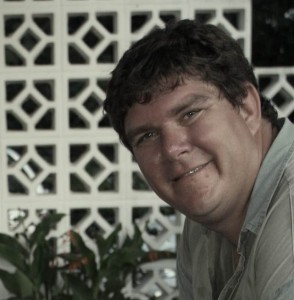 Dr Olaf LF Weyl, Principal Scientist at the South African Institute for Aquatic Biodiversity (SAIAB), Grahamstown 6140, South Africa
Dr Olaf LF Weyl, Principal Scientist at the South African Institute for Aquatic Biodiversity (SAIAB), Grahamstown 6140, South Africa
My current research focus at SAIAB is geared towards providing information with which to better manage Africa’s aquatic biodiversity. To this end I have worked on freshwater ecosystems in several African countries including Mozambique, Malawi, Namibia, Botswana, Zambia and South Africa. Current interests are fisheries, native fish conservation and alien fish invasions. As a result my research is multidisciplinary and includes not only research on natural systems and processes but also research on understanding how humans alter and benefit from aquatic systems. Recent invasive fish related projects include assessing the impacts of recreational angling species such as carp and bass on native fish and invertebrate communities; parasitological and ecological research on eels; monitoring the recovery of stream ecosystems after alien fish removal using piscicides; impacts of hybridisation resulting from fish introductions; managing fish invasions in protected areas and assessing the role that alien fishes play in subsistence and recreational fisheries in South Africa. I also provide policy support with regards to inland fisheries and legislation on alien fish management. I am also active in the development of decision making tools used by provincial nature conservation departments to assess invasion risks through fish introductions. I am on the editorial board member of African Zoology, African Journal of Aquatic Science and Journal of Fish Biology and provide expert advice for several organisations including the Endangered Wildlife Trust and the World Wildlife Fund.
Selected publications
Woodford DJ, Weyl OLF, Cunningham M, Bellingan TA, de Moor FC, Barber-James HM, Day JA, Ellender BR, Richardson NK (2012) Monitoring the impact and recovery of the biota of the Rondegat River after the removal of alien fishes. Water Research Commission Report (in press), Pretoria, SA.
Van Rensburg BJ, Weyl OLF, Davies SJ, van Wilgen LJ, Peacock DS, Spear D, Chimimba CT (2011) Chapter 15: Invasive Vertebrates of South Africa. in Biological Invasions: Economic and Environmental Costs of Alien Plant, Animal, and Microbe Species. 2nd Edition. Pimentel, D. (Ed.), Boca Raton, Florida: CRC Press. pp: 326-378.
Parker D, Weyl OLF, Taraschewski H (2011) Invasion of a South African Anguilla mossambica (Anguillidae) population by the alien gill worm Pseudodactylogyrus anguillae (Monogenea). African Zoology 46(2): 371-377.
Winker H, Weyl OLF, Booth AJ, Ellender BR (2011) Life history and population dynamics of invasive common carp, Cyprinus carpio, within a large turbid African impoundment. Marine and Freshwater Research 62(11), 1270-1280.
Olds AA, Smith MKS, Weyl OLF, Russell IA (2011) Alien invasive freshwater fishes in the Wilderness Lakes system, a wetland of international importance, Western Cape, South Africa. African Zoology 46: 179-184.
Weyl PSR, DeMoor FC, Hill MP, Weyl OLF (2010) The effect of largemouth bass Micropterus salmoides on aquatic macroinvertebrate communities in the Wit River, Eastern Cape, South Africa. African Journal of Aquatic Science. 35(4): 273-282.
Weyl OLF, Ribbink AJ, Tweddle D (2010) Lake Malawi: fishes, fisheries, biodiversity, health and habitat’, Aquatic Ecosystem Health & Management, 13: 3, 241 — 254. DOI: 10.1080/14634988.2010.504695
Weyl OLF, Stadtlander T, Booth AJ (2009) Establishment of translocated populations of smallmouth yellowfish, Labeobarbus aeneus (Pisces: Cyprinidae) in lentic and lotic habitats within the Great Fish River system, South Africa. African Zoology 44, 93-105.
Weyl OLF (2008) Rapid invasion of a subtropical lake fishery in central Mozambique by Nile tilapia, Oreochromis niloticus (Pisces: Cichlidae). Aquatic Conservation Marine and Freshwater Ecosystems. 18: 839-851. DOI:10.1002/aqc.897
Weyl OLF, Potts W, Britz P, & Rouhani Q. (2007) The need for inland fisheries policy in South Africa: a case study of the North West Province. Water SA. 33(4): 497-504.
